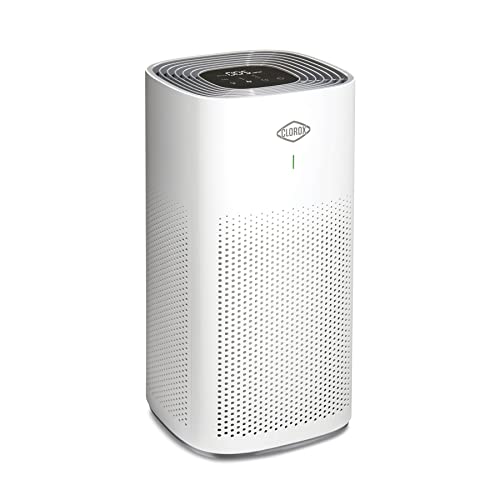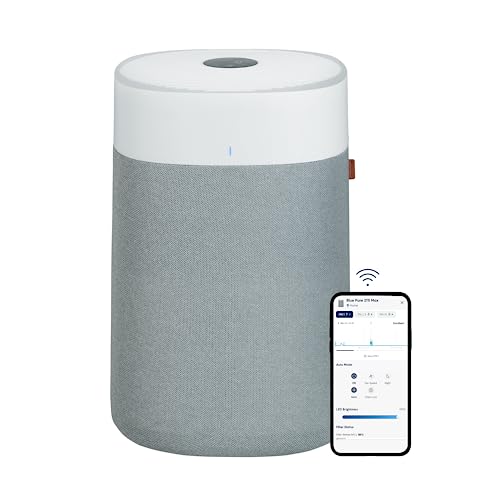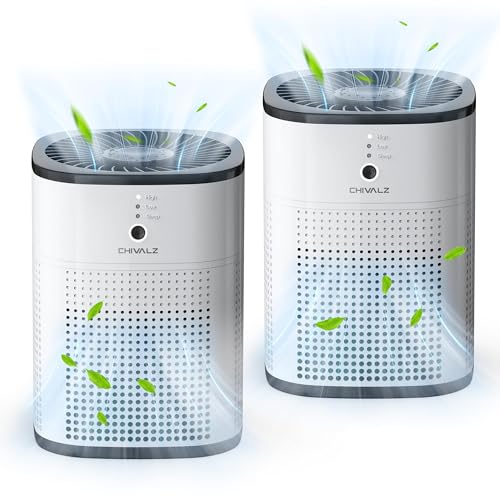Which of the Following Substitutions Can Help Reduce Air Pollution | Know Your Facts
Air pollution is a major environmental issue affecting health, ecosystems, and climate stability. Our daily activities contribute to the air pollution problem, but there are practical ways to mitigate this impact. This article explores various effective substitutions and strategies to reduce air pollution and enhance air quality.
Table of Contents
Switching to Renewable Energy Sources

1. Solar Power
Solar energy captures sunlight to generate electricity, offering a clean alternative to fossil fuels. Solar panels produce no air pollutants, unlike traditional power sources that release harmful substances into the atmosphere.
Benefits of Solar Power:
- No Emissions: Solar energy generation does not release pollutants.
- Abundant Resource: Solar power is derived from the sun, a plentiful resource.
- Cost Savings: Solar energy can reduce utility bills over time.
In California, solar power adoption has demonstrated significant reductions in greenhouse gas emissions, improving air quality and public health.
2. Wind Energy
Wind energy converts wind movement into electricity. It’s a sustainable energy source with zero direct emissions, making it a vital component in reducing air pollution.
Advantages of Wind Energy:
- Pollution-Free: Wind turbines generate electricity without emitting pollutants.
- Renewable: Wind is an inexhaustible resource.
- Economic Growth: Wind energy projects create jobs and support local economies.
Countries like Denmark, where wind power is a major energy source, show that scaling up wind energy can drive economic growth and enhance air quality.
3. Geothermal Power
Geothermal energy harnesses heat from beneath the Earth’s surface to produce electricity and heating. It’s a low-emission energy source that helps reduce air pollution.
Key Points of Geothermal Power:
- Low Emissions: Minimal pollutant release compared to fossil fuels.
- Reliable Energy: Provides a consistent power supply.
- Land Use: Requires less land compared to other energy sources.
In Iceland, geothermal energy has been a cornerstone of sustainable energy use, with minimal environmental impact and reliable energy production.
4. Hydropower
Hydropower generates electricity by using flowing water to turn turbines. It’s a widely used renewable energy source that reduces reliance on fossil fuels.
Benefits of Hydropower:
- Emissions-Free: Hydropower plants do not emit air pollutants.
- Efficient: Known for high efficiency in power generation.
- Sustainable: Uses renewable water resources.
Despite some ecological impacts, the Three Gorges Dam in China is a prime example of how hydropower can significantly cut coal use and enhance air quality. Which of the Following Substitutions Can Help Reduce Air Pollution?
Embracing Sustainable Transportation

1. Electric Vehicles (EVs)
Electric vehicles (EVs) offer a clean alternative to gasoline-powered cars, producing no tailpipe emissions. This shift reduces air pollutants like CO2 and nitrogen oxides.
Advantages of Electric Vehicles:
- Zero Tailpipe Emissions: EVs do not contribute to air pollution.
- Efficient: More energy-efficient than traditional vehicles.
- Lower Costs: Reduced maintenance and fuel costs.
The International Energy Agency (IEA) projects that increased EV adoption could lower global CO2 emissions significantly, aiding air quality management efforts.
2. Public Transit and Carpooling
Public transit and carpooling reduce the number of vehicles on the road, decreasing emissions and traffic congestion. These options lower the overall environmental impact of transportation.
Benefits of Public Transit and Carpooling:
- Fewer Emissions: Less vehicle use results in lower pollution levels.
- Cost Savings: Reduces fuel and vehicle maintenance expenses.
- Traffic Reduction: Less congestion and shorter commute times.
Cities like New York and London have extensive public transit systems that reduce pollution and enhance urban mobility, showing the benefits of collective transportation solutions.
3. Cycling and Walking
Cycling and walking are eco-friendly transportation methods that eliminate emissions. These practices also offer health benefits and reduce the need for short car trips.
Advantages of Cycling and Walking:
- Emission-Free: No pollutants are produced.
- Health Benefits: Improves fitness and well-being.
- Cost-Free: No fuel costs and minimal maintenance.
Cities such as Copenhagen have become models for cycling infrastructure, leading to decreased car usage and improved air quality. Which of the Following Substitutions Can Help Reduce Air Pollution? Lets dig more. Which of the Following Substitutions Can Help Reduce Air Pollution? Let’s go to next chapter.
Improving Building Energy Efficiency

1. Efficient Appliances
Using energy-efficient appliances, like LED lights and Energy Star-rated devices, lowers energy consumption and reduces emissions from power plants.
Benefits of Efficient Appliances:
- Reduced Energy Use: Less electricity consumption.
- Cost Savings: Lower utility bills.
- Environmental Impact: Fewer emissions from energy production.
The American Council for an Energy-Efficient Economy (ACEEE) suggests that widespread use of such appliances could cut energy use dramatically, benefiting air quality.
2. Insulation and Weatherproofing
Proper insulation and weatherproofing prevent energy loss, reducing the need for heating and cooling. This helps lower emissions from energy use.
Key Points of Insulation and Weatherproofing:
- Energy Savings: Decreases heating and cooling needs.
- Lower Emissions: Reduces energy consumption.
- Comfort: Maintains stable indoor temperatures.
Good insulation can cut heating and cooling costs significantly, leading to better air quality through reduced energy demand.
3. Smart Home Innovations
Smart home technologies, like programmable thermostats and energy management systems, optimize energy use and reduce waste.
Advantages of Smart Home Innovations:
- Energy Efficiency: Automates adjustments to reduce consumption.
- Convenience: Provides enhanced control and comfort.
- Environmental Impact: Lower energy use leads to fewer emissions.
A study from the U.K. found that smart thermostats could reduce energy use by up to 15%, contributing to better air quality. Which of the Following Substitutions Can Help Reduce Air Pollution? Did you get your answer?
Advocating for Waste Reduction and Recycling

1. Minimizing Waste Generation
Reducing waste involves choosing products with minimal packaging and opting for reusable items, which lessens the overall waste footprint.
Benefits of Minimizing Waste:
- Less Pollution: Decreases landfill and incineration needs.
- Resource Conservation: Reduces the demand for raw materials.
- Cost Savings: Savings from bulk purchases and reusables.
The Zero Waste movement promotes these practices, with cities like San Francisco achieving significant waste reduction.
2. Recycling and Composting
Recycling and composting divert waste from landfills and incinerators, conserving resources and reducing emissions.
Key Points of Recycling and Composting:
- Resource Conservation: Reuses materials, saving raw resources.
- Energy Savings: Less energy required compared to new production.
- **Reduced Em
issions:** Lower emissions from reduced waste disposal.
Germany’s comprehensive recycling program showcases how effective recycling and composting can be in reducing waste and enhancing air quality.
3. Eco-Friendly Products
Choosing eco-friendly products, such as biodegradable packaging and non-toxic cleaners, helps lessen environmental pollution and supports sustainable practices.
Advantages of Eco-Friendly Products:
- Lower Pollution: Fewer harmful chemicals and materials are used.
- Sustainable Production: Environmentally responsible manufacturing methods.
- Health Benefits: Often safer for human health.
According to the Journal of Cleaner Production, opting for eco-friendly products can cut a consumer’s carbon footprint by up to 30%. Which of the Following Substitutions Can Help Reduce Air Pollution?
Supporting Urban Green Spaces

1. Urban Tree Planting
Urban forestry involves planting and maintaining trees in cities to boost air quality and provide environmental benefits. Trees absorb pollutants and offer numerous advantages to urban environments.
Benefits of Urban Tree Planting:
- Air Purification: Trees filter pollutants and produce oxygen.
- Temperature Regulation: Provides shade and cools urban areas.
- Aesthetic Improvement: Enhances cityscapes.
Cities like Toronto and Singapore have invested heavily in urban tree planting to improve air quality and community well-being.
2. Green Roofs and Walls
Incorporating vegetation into building structures, such as green roofs and walls, helps mitigate urban pollution and offers additional environmental benefits.
Key Points of Green Roofs and Walls:
- Pollutant Absorption: Plants absorb air pollutants and provide cooling.
- Energy Efficiency: Acts as insulation, reducing heating and cooling needs.
- Biodiversity: Supports wildlife by creating new habitats.
Urban areas like New York and London are integrating green roofs and walls to enhance air quality and urban ecology.
3. Community Gardens
Community gardens allow urban dwellers to grow their own food and engage in sustainable practices. These gardens contribute to cleaner air by increasing greenery and reducing food transportation emissions.
Advantages of Community Gardens:
- Local Food Production: Reduces transportation-related emissions.
- Community Engagement: Fosters social connections and learning opportunities.
- Environmental Education: Teaches about sustainability and food production.
Detroit’s transformation of vacant lots into community gardens highlights the positive impact of such initiatives on urban air quality and local food access.
Conclusion
Mitigating air pollution demands a multifaceted approach that involves adopting renewable energy sources, embracing sustainable transportation methods, improving building energy efficiency, reducing waste, and supporting urban green spaces. These strategies offer practical solutions to enhance air quality and foster healthier communities.
By implementing the discussed substitutions and strategies, we can make meaningful progress toward cleaner air and a more sustainable future. It’s essential for individuals, communities, and governments to collaborate in making these changes a reality. Lassowond.com would be the best knowledge center to upgrade yourself in this case. Which of the Following Substitutions Can Help Reduce Air Pollution?
FAQs ( Which of the Following Substitutions Can Help Reduce Air Pollution?)
Q1: How does using renewable energy help with air pollution?
Switching to renewable energy sources like solar and wind reduces air pollution by eliminating emissions associated with burning fossil fuels. These sources produce little to no pollutants, leading to cleaner air and a healthier environment.
Q2: What are the benefits of solar energy?
Solar energy offers several benefits, including zero emissions during power generation, an abundant and renewable resource, and long-term cost savings through reduced electricity bills.
Q3: Are there any drawbacks to hydropower?
While hydropower is a clean energy source, it can have environmental impacts, such as disrupting aquatic ecosystems and displacing communities. Modern hydropower projects often address these issues with mitigation measures.
Q4: How does wind energy contribute to better air quality?
Wind energy generates electricity without air pollution, as it doesn’t involve burning fossil fuels. By using wind power, we can significantly reduce emissions and improve air quality.
Q5: What role does geothermal energy play in sustainable development?
Geothermal energy is a stable and low-emission power source that reduces reliance on fossil fuels, cuts greenhouse gas emissions, and supports sustainable development by providing a consistent energy supply.
Disclaimer: The views and opinions expressed in this review are based on the author’s personal experience and research. Individual results may vary. Always refer to the manufacturer’s guidelines and instructions for proper usage and maintenance of the product.
Lassowond
-
 Clorox Air Purifiers for Home, True HEPA Filter, Large Rooms up to 1,500 Sq Ft, Removes 99.9% of Mold, Viruses, Wildfire Smoke, Allergens, Pet Allergies, Dust, AUTO Mode, Whisper Quiet$119.99
Clorox Air Purifiers for Home, True HEPA Filter, Large Rooms up to 1,500 Sq Ft, Removes 99.9% of Mold, Viruses, Wildfire Smoke, Allergens, Pet Allergies, Dust, AUTO Mode, Whisper Quiet$119.99 -
 Shark Air Purifiers for Home Large Room with NeverChange Air Filter, 5 Year HEPA Filter, Covers 650 Sq. ft, Odor Neutralizer and Clean Sense Technology, Removes 99.98% of Dust & Allergens, HP152$179.99
Shark Air Purifiers for Home Large Room with NeverChange Air Filter, 5 Year HEPA Filter, Covers 650 Sq. ft, Odor Neutralizer and Clean Sense Technology, Removes 99.98% of Dust & Allergens, HP152$179.99 -
 Nuwave OxyPure ZERO Air Purifiers with 20 Yr Washable and Reusable Bio Guard Tech Air Filter, Large Room Up to 2002 Ft², Air Quality Monitor, 0.1 Microns, 100% Capture Allergies, Smoke, Dust, Pollen$359.99
Nuwave OxyPure ZERO Air Purifiers with 20 Yr Washable and Reusable Bio Guard Tech Air Filter, Large Room Up to 2002 Ft², Air Quality Monitor, 0.1 Microns, 100% Capture Allergies, Smoke, Dust, Pollen$359.99 -
 AeraMax Air Purifier for Allergies$211.82
AeraMax Air Purifier for Allergies$211.82 -
 WeGuard Air Purifiers K300 HEPA$69.99
WeGuard Air Purifiers K300 HEPA$69.99 -
 HIMOX Air Purifier HEPA 14 | 1560 Sqft$180.68
HIMOX Air Purifier HEPA 14 | 1560 Sqft$180.68 -
 Fellowes AeraMax 100 Air Purifier for Mold, Odors, Dust, Smoke, Allergens and Germs with True HEPA Filter and 4-Stage Purification – 9320301, White, Small$129.45
Fellowes AeraMax 100 Air Purifier for Mold, Odors, Dust, Smoke, Allergens and Germs with True HEPA Filter and 4-Stage Purification – 9320301, White, Small$129.45 -
 BLUEAIR Air Purifiers for Large Home Room, HEPASilent Air Purifiers for Bedroom, Air Purifiers for Pets Allergies Air Cleaner, Smart Air Purifier, Virus Air Purifier for Dust Mold, Blue Pure 211i Max$244.99
BLUEAIR Air Purifiers for Large Home Room, HEPASilent Air Purifiers for Bedroom, Air Purifiers for Pets Allergies Air Cleaner, Smart Air Purifier, Virus Air Purifier for Dust Mold, Blue Pure 211i Max$244.99 -
 Air Purifiers for Bedroom, CHIVALZ Air Purifiers for Home, Quiet Air Cleaner with 24dB Sleep Mode, H13 HEPA Filter for Allergies, Pollen, Smoke, Pet Dander, Dust, White & Black (2 Pack)$59.84
Air Purifiers for Bedroom, CHIVALZ Air Purifiers for Home, Quiet Air Cleaner with 24dB Sleep Mode, H13 HEPA Filter for Allergies, Pollen, Smoke, Pet Dander, Dust, White & Black (2 Pack)$59.84 -
 HoMedics TotalClean 4-in-1 Tower Air Purifier, 360-Degree HEPA Filtration for Allergens, Dust and Dander with Ionizer for Home, Office and Desktop, Night-Light and Essential Oil Aromatherapy (White)$53.75
HoMedics TotalClean 4-in-1 Tower Air Purifier, 360-Degree HEPA Filtration for Allergens, Dust and Dander with Ionizer for Home, Office and Desktop, Night-Light and Essential Oil Aromatherapy (White)$53.75 -
 2 Pack Air Purifiers for Bedroom 5 Layers H13 HEPA Air Filter, 22db Quiet Air Purifiers for Home Pets,Desktop,Kitchen,Filter 99.99% Smoke,Pollen, Pet Dander,Dust, Ozone Free, Available for California$79.99
2 Pack Air Purifiers for Bedroom 5 Layers H13 HEPA Air Filter, 22db Quiet Air Purifiers for Home Pets,Desktop,Kitchen,Filter 99.99% Smoke,Pollen, Pet Dander,Dust, Ozone Free, Available for California$79.99 -
 Dayette HEPA Air Purifiers for Home Large Room, CADR 400+ m³/h Up to 1720 Sq Ft, H13 Ture Hepa Air Filter Cleaner for Allergies Pet Dander Smoke Dust with 22dB Sleep Mode for Bedroom, White$118.99
Dayette HEPA Air Purifiers for Home Large Room, CADR 400+ m³/h Up to 1720 Sq Ft, H13 Ture Hepa Air Filter Cleaner for Allergies Pet Dander Smoke Dust with 22dB Sleep Mode for Bedroom, White$118.99















*This page contains affiliate links, and We earn commissions from qualifying purchases through these links. Please review our Affiliate Disclaimer for details.